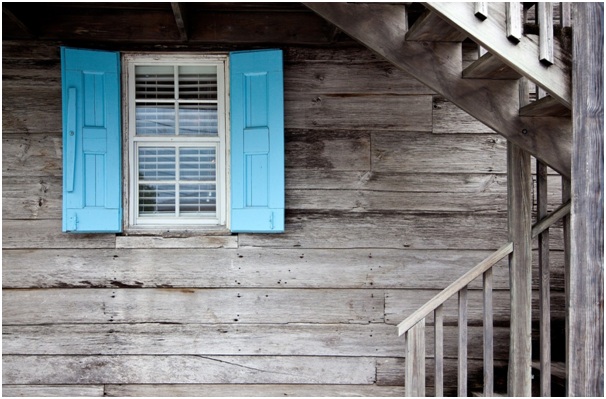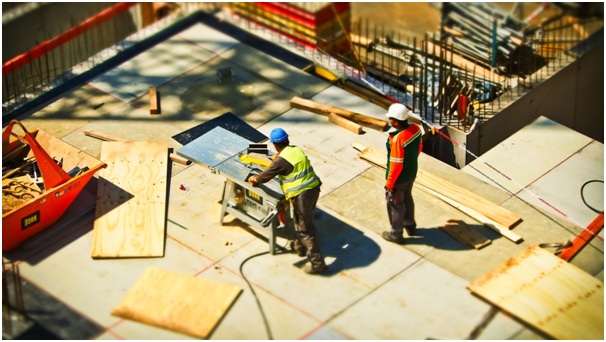A little goes a long way when you live in a sustainable home. The need for sustainability that begins from our home spaces is more relevant than ever in 2021. Nature has been protesting pretty audibly against human atrocities, and it would be a grave mistake on our part if we do not listen and take action.
Building a sustainable home and renovating your current home with sustainability in mind are two of the best ways in which you can reduce the negative impacts caused on the environment. If you search around in your locality, you will find initiatives aimed at sustainability and eco-friendliness within your community. Sustainable homes are beneficial not just to your environment. They also help reduce your living costs, make the atmosphere inside clean and healthy and turn your living space energy-efficient.
Table of Contents
Choose the right building materials.
Traditionally, houses are constructed using numerous materials that are incredibly toxic in nature. There are several options today if you plan on constructing a green home. Making use of non-toxic materials during construction and remodelling will reduce the negative impacts they have on the environment and the residents. Homeowners and builders can choose safe and sustainable options when it comes to wood, adhesives, paint, etc. Bamboo can be used as a wonderful replacement for hardwood, and it provides increased durability with a reduced impact on the environment.
Hempcrete is a biocomposite material that is created from lime, hemp hurds and sand. Hemp hurds or shives are the unused part that is separated when plants like jute, hemp and flax are processed. This material resembles wood and is mould resistant and keeps insects away. Today, hempcrete is considered one of the best alternatives to traditional materials used for constructing homes. The material is both durable and fireproof, making it an ideal choice in the 21st century.
Cargotecture makes use of recycled shipping containers to build sustainable homes. The term originated in 2003, and this method has gained considerable popularity since then. Shipping containers are built using high-quality, durable materials, but they are often discarded after a while. Using these containers in construction will give you homes that are durable, extremely sustainable and sometimes can even be shifted to another location.
Prefab homes are manufactured at a factory. The parts that are shipped from the manufacturing site are then assembled at the house’s location. Due to this offsite manufacturing process, there is lower waste in construction materials and reduced chances of theft. Since the components of the house are prepared indoors, it can be done while the location is being readied. So, Prefab home construction and assembly can be completed in just two months at times.
Purchase sustainable home appliances
Whether you are shopping for appliances to install in your new home or if you want to replace damaged ones in your current home, always remember to choose only the sustainable options.
Today, it is nearly impossible to survive without multiple appliances installed in every part of your home. Your refrigerators, dryers, dishwashers, air conditioners and various other devices can rake up a hefty electricity bill while simultaneously negatively affecting the environment around you. So it is crucial that you choose the right sustainable products when you shop at https://proheat.org/prineville-heating-and-cooling/ and other stores.
All appliances are expensive both during the purchase and operation. With the help of sustainable products that are cost and energy-efficient, you can considerably reduce the operational costs of all the appliances in your home.
The better options when it comes to refrigerators enable you to choose a powered-down mode that can be utilised when you stay away for just a day or two. Some provide you with the ability to set different temperatures at each shelf, making it easier to group items that require a lot of cooling and separate them from those that last longer. When it comes to the eco-friendliness of your refrigerator, you must take note of the coolant that your brand uses. Many still continue to use CFCs and HCFCs but like to keep their customers unaware of that fact. Brands that do not use these hazardous substances will clearly advertise it, so choose brands that use coolants less harmful to the environment.
Research various features that are essential to ensure the sustainability of all the appliances at your home before you purchase one.
Apart from purchasing eco-friendly and energy-efficient appliances, it is also crucial that you regularly clean them and have them working at top condition. Cleaning the coils of your refrigerator will prevent it from drawing more electricity than necessary. It will also ensure that the refrigerator functions at optimum levels. Regular maintenance of your plumbing, heating and air conditioning facilities will help prevent unexpected emergencies that require replacements or expensive repairs.
Renewable energy sources
Those concerned about the non-renewable gas they burn in their vehicles try to find more sustainable fuels that can be used in transportation. Similarly, the power required to keep your house running must also come from a renewable source if you have sustainability in mind.
The electricity companies in a few regions around the world have shifted to renewable resources to generate power. This meant that residents of that area could easily switch to a sustainable source of electricity without any hassles.
But for those who do not live near such electricity providers, the best alternative is to set up solar panels on the roof. Solar energy is a wonderful renewable power source that can be used to have all your appliances up and running. With solar energy, you will save lots of money that would have been spent on electricity bills.
Compost bins and drip irrigation
The compostable waste that comes out of your kitchen every day can be deposited in a compost pit or bin containing earthworms and other helpful creatures. The waste will no longer have to be deposited in landfills and once it is ready, can be utilised in your garden to turn your soil nutrient-rich.
If you are someone who takes gardening seriously and would like to grow vegetables and fruits, consider shifting to a drip irrigation system. You will avoid the wastage of water associated with sprinklers and hoses. The water will be directed to the roots of your plants, minimising wastage and ensuring uninterrupted supply.
Well-maintained vegetation around your home can provide cooler air and keep the atmosphere healthy besides being a food source.
Walls, roofs and windows

Today numerous sustainable options are available if you wish to change the walls and roof of your house.
Cool roofs reflect the rays of the sun, keeping the interiors of your house considerably cooler. This reduces the need for continuous functioning of air conditioners. Cool roofs often make use of asphalt shingles that repel the sun’s heat, and today they come in multiple colours.
Living roofs are installed with the ability to allow the growth of vegetation. The vegetation prevents the damage to the roof caused by the sun’s heat and helps sustain it for many years. This roof also keeps the house warm during the winter and cooler during the summer.
Just like living roofs, living walls are also gaining popularity among homeowners. Living plants grown on entire walls keep the interior atmosphere cleaner, healthier and manage the humidity levels. The green walls inside the house are also pleasing to the eye, making it beneficial for the mental health of the residents.
Replacing your windows with more energy-efficient ones will reduce the strain on your cooling and heating appliances. These energy-efficient windows promote passive solar heating, making it much easier to regulate the interior temperature in colder regions. The windows with UV coating will control the number of ultraviolet rays that enter your house, thereby preventing the damage to various objects inside. These windows also act as a much more substantial barrier to outside sounds, improving the living quality and peace of mind of the house’s residents.
Simple habits that can improve home sustainability
Given below are some changes you can make in your day-to-day activities as a resident to improve the sustainability of your home.
Replace all your fluorescent bulbs with LED and CFL ones. These last longer, reducing the need to purchase replacements regularly. They also use lesser toxic materials making their use and disposal much safer in comparison.
Open up your blinds and let in as much natural light as possible as it helps with reduced consumption of electricity. Also, remember to switch off the lights and other electricity-powered objects every time you exit a room. At night turn off all electronic devices that are not in use. This includes your Wifi, your laptop, TV and the fixtures in your living room and kitchen.
Wear an extra layer of clothing when it gets colder instead of turning up the heat. You can also open up your curtains to let in as much sunshine as possible to regulate the temperature indoors.
Use a drying rack or hang your wet clothes on a line outside under the sun instead of using a dryer. This saves you the buying and operation costs of a dryer and leaves you with dry clothes that have been sterilised by the sun’s rays.
If you need only a few clothes washed, instead of using the washing machine, do it by hand. This saves both water and electricity.
If you have a yard or extra space around your house, grow your own vegetables, fruits and herbs. You can use the compost made out of kitchen waste as manure and integrate many things around your home into an energy-efficient, productive cycle that keeps you supplied with healthy consumable items.
Purchase reusable metal straws and chopsticks instead of ones that have to be disposed of after every use. Replace your paper towel rolls with a cloth that can be washed and used over and over in the kitchen.
Pressure cookers can help reduce the time you invest in cooking alongside the efforts and resources required. You can also minimise food wastage by preparing only the necessary amount or storing the leftovers for later consumption. You can also carry out meal preps for a week to enormously reduce the cooking time and promote healthy eating.
While removing your makeup, use reusable cotton pads instead of disposable ones. Try out shampoo bars as an alternative to bottles that need to be replaced regularly.
Choose reusable menstrual products such as cups and cloth pads instead of ones that need to be disposed of after each use. Menstrual cups last many years, saving you the amount you regularly spend on menstrual products and reducing the harmful impacts on the environment.
Summing up
Sustainability starts at home and teaching the next generation to be more aware of the consequences of their actions, and the negative impacts of the objects they use are essential for the conservation of the environment for the future. Even if you lack the budget to carry out massive structural changes regarding your house, there are little habits you can cultivate to improve the sustainability at home.













